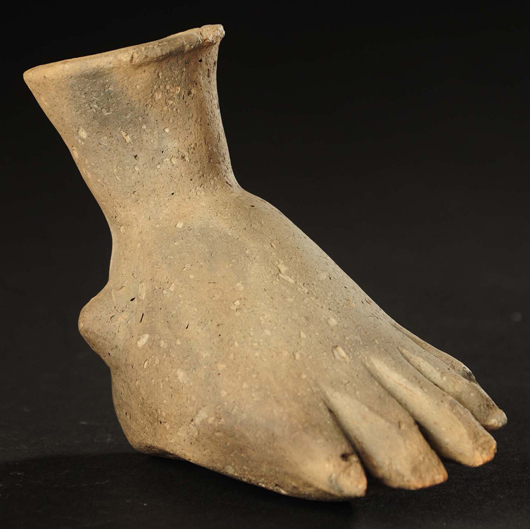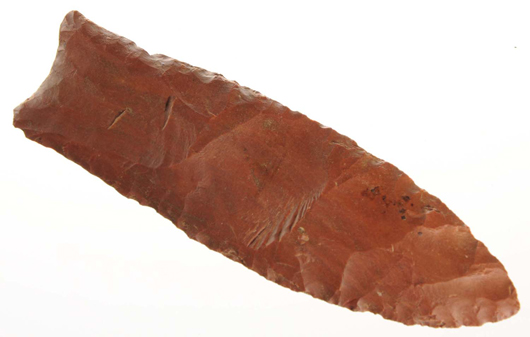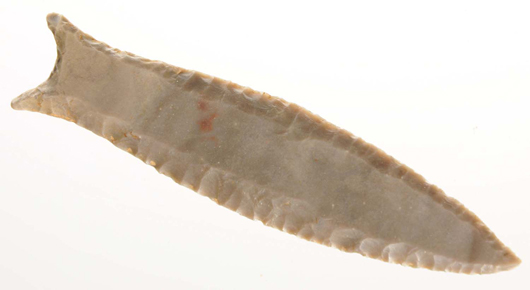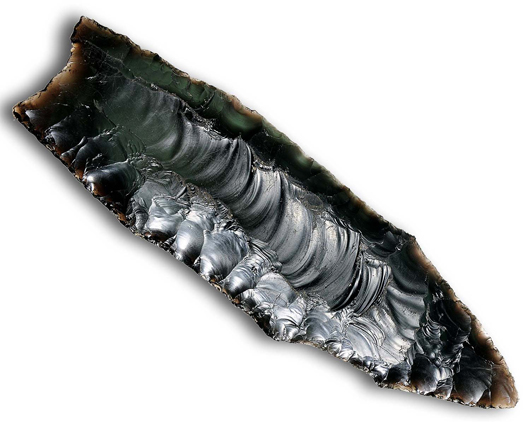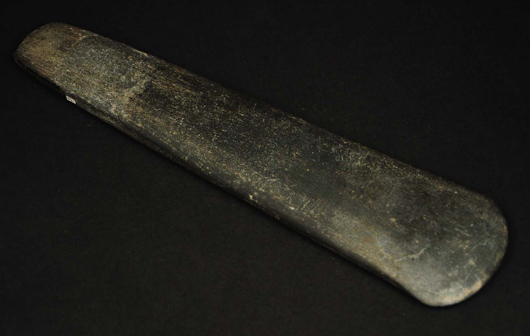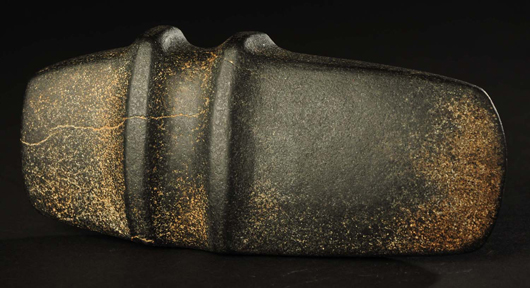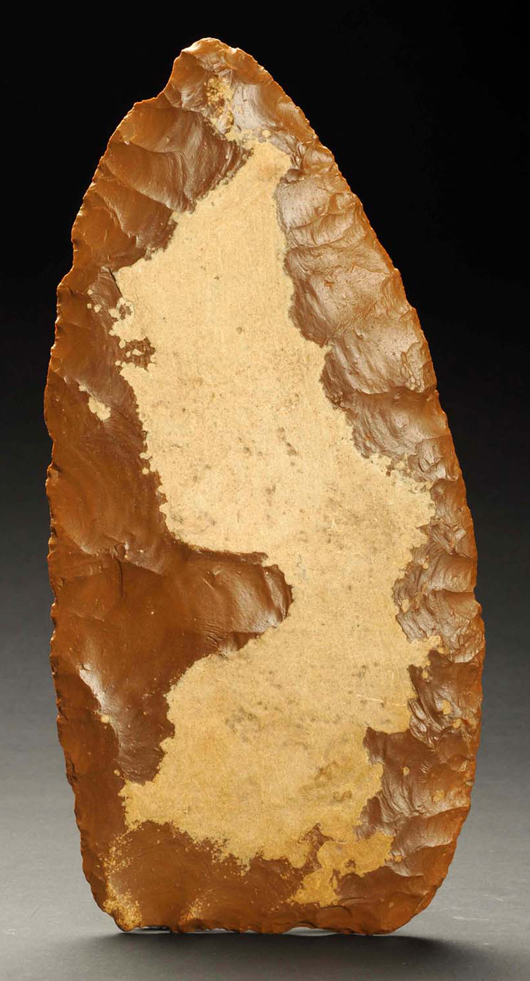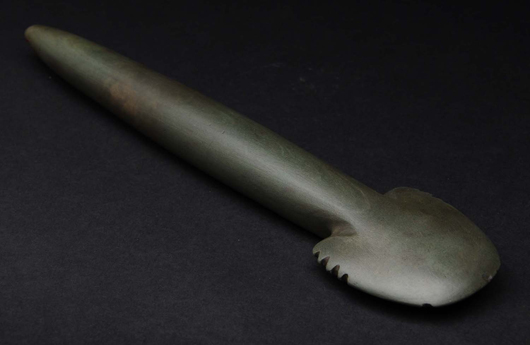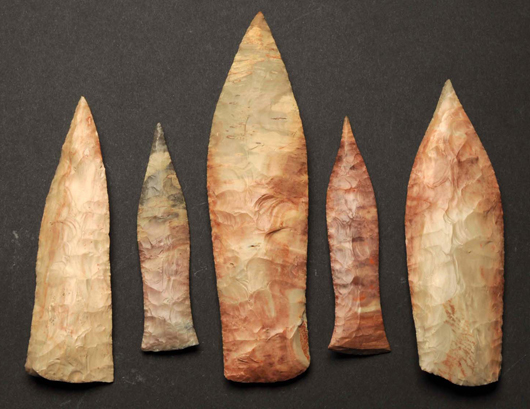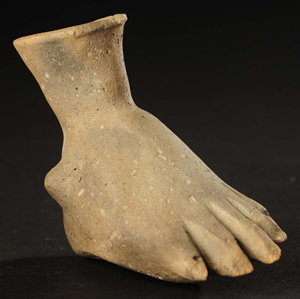
DENVER, Pa. – The fascinating world of prehistoric American artifacts will come to life on Saturday, November 9th, as Morphy’s presents a 159-lot specialty auction of points, blades, pottery vessels, pipes and primitive jewelry from civilizations past. Internet live bidding will be available through LiveAuctioneers.
The highly select offerings in this first-of-its-kind specialty event for Morphy’s were curated under the studied eye of John Mark Clark. A noted authority, Clark heads Morphy’s recently established Prehistoric American Artifact & Arrowhead division.
“Mark has an incomparable 50-year track record as a collector and scholar. As a result of his efforts and his connections in the hobby, Morphy’s debut auction of prehistoric American artifacts will be a world-class event where collectors can buy with absolute confidence,” said Morphy Auctions CEO Dan Morphy.
Clark handpicked a team of the most experienced and knowledgeable people in the prehistoric field to authenticate each piece in the sale.
“When we say we left no stone unturned, we mean that quite literally,” Clark said. “Each piece was examined many times, by many sets of critical eyes.”
Highlighting the sale is the Rutz Clovis Point, a piece so important it was chosen as the sole image for the auction catalog cover. At 9¾ inches long, this sea-green obsidian masterpiece is the largest Clovis point on record. It was discovered by Les Ira Kreis in the early 1950s, in a wheat field on Badger Mountain in Douglas County, Washington. The monumental point has been consigned to Morphy’s by the family of the original finder, and its renown and historical importance confidently support a presale estimate of $200,000-$400,000.
Other Paleolithic (early Stone Age) items in the auction include an exquisite Middle Tennessee Cumberland fluted point ($15,000-$25,000), a large red jasper Clovis point with streaks of gold ($5,000-$10,000), and a fantastic 10½in biface blade, sourced in Mercer County, Missouri and made of rare Niobrara flint ($10,000-$15,000).
The sale also includes what is believed to be the largest, and undoubtedly the finest, cache of Archaic motley points yet discovered. These large points all range from 4 to 6 inches and are covered with calcined patina on the bottom side. Other Archaic-Era offerings include several beautiful dovetails, Daltons and Snyders points. An extensive old-time collection of very nice Archaic Texas points will be offered, as well.
Several Archaic bannerstones are included in the sale, the highlight being a ferruginous quartz Tennessee-style bottle banner found in 1910 on the Bell Farm in Davidson County, Tennessee. In spectacular condition, it is estimated at $15,000-$25,000. One of the finest hardstone raised-groove axes ever found in Tennessee is entered in the sale, as well. It comes with provenance from the David Dougherty collection and is expected to make $7,000-$10,000.
The Woodland Era is well represented by a cache of five Southern Tennessee Copena points. “I would say ‘outrageous’ best describes the Beech Creek and Horse Creek cherts selected by the ancient craftsman to make these particular points, which are very colorful,” Clark said. “The two smaller blades are considered the finest of their type.” Other Woodland offerings include two rare Jack’s Reef points and two celts from the Point Peninsular culture.
Mississippian culture offerings include a pottery bowl with a “rattlehead” rimrider shaped as a human head ($2,000-$3,000), a rare flared-neck effigy jar formed as a human foot ($7,000-$10,000), two Nodena swirl red-on-buff painted bottles, an 8½in Dover ceremonial blade, and several high-status Greenstone ceremonial objects from the Dallas culture of southeastern Tennessee.
An outstanding offering of Caddo culture artifacts is highlighted by finely engraved pots, jars and bottles, several of which are unique forms. A solid Caddo pipe will be auctioned, along with a superb collection of Hayes points.
Morphy’s Nov. 9 Prehistoric American Artifacts Auction will commence at 9 a.m. Eastern Time.
For additional information on any item in the sale, call Mark Clark at 931-237-3646 or email markclarksville@live.com.
View the fully illustrated catalog and sign up to bid absentee or live online during the auction through LiveAuctioneers.com.
# # #
ADDITIONAL LOTS OF NOTE
